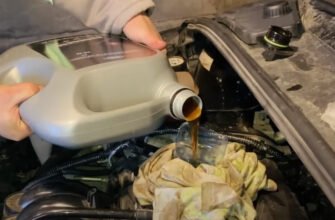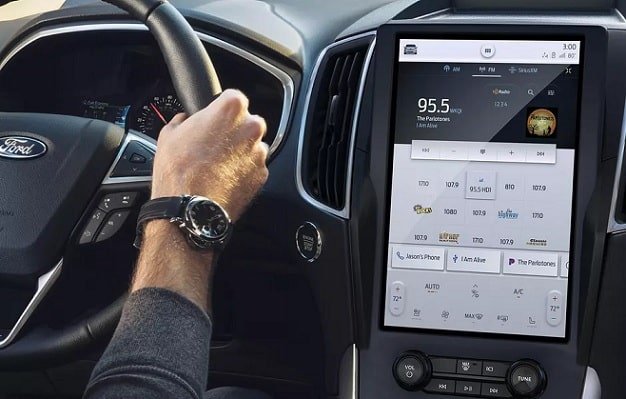Being on this page means that you’re having issues with your Ford AC compressor clutch and/or your AC blows warm air instead of a cool breeze. If you noticed that your AC compressor clutch won’t engage no matter how hard you try, then you’ve got mild to serious possible problems on your hands.
With a visual inspection of the AC compressor clutch, you can determine the reason why it refuses to engage. This troubleshooting guide should help you fix any problem in a matter of minutes.
Ford Escape AC Compressor Not Engaging: How to Check and Fix

Inspect with the Engine Off
Ensure that your engine is turned off when performing this inspection.
Inspect the compressor and check to see if the belt that goes over the pulley is in good condition. If you notice that the belt is slipping then you would have to adjust it. However, if you notice that is worn, then it would have to be replaced. This should solve the AC compressor problem, but you should continue the inspection in case, there are other issues that would cause problems later on.
Check the clutch plate for signs of rust. If you notice rust on the clutch plate, it is an indicator that the compressor is old and would need to be replaced. Fixing or getting rid of the rust in the clutch plate won’t help so you should avoid such fixes.
Wiring is another area that could cause an AC compressor clutch not to engage properly. Check the wiring to the clutch for any issues. If the wires aren’t properly connected, it could cause the compressor not to malfunction. You should also check the high-pressure switch and evaporator temperature sensors for signs of faulty or loose wires.
Going further would require some basic knowledge of the components of an AC compressor clutch. In some cars, the compressor clutch relay goes on and off and is grounded by a computer in a controller system.
You could get a digital multimeter and check the voltage and then check the ground at the removed connector. If you don’t get any voltage reading, then check the fuse. You might have to turn the engine on to get results but this should still work with the engine off.
If the fuse is fine, then you need to check the clutch relay. Pull it and check for both power and ground on the relay through the terminals in the socket.
Another possible cause could be leaks in the AC system. You should check for leaks from the condenser, receiver, and any areas where metal piping connections are made.
Inspect with the Engine Turned On
With the engine on, you can fully diagnose the problem.
Turn the AC to high while looking at the serpentine belt for any issues. Then focus on the compressor clutch. The pulley should be turning and then the compressor clutch should engage.
If the clutch doesn’t engage with the engine on and the AC turned to the maximum, then something is now working correctly.
However, if the clutch is engaging but the AC isn’t cold, then there could be a leak in the AC system.
Low on Refrigerant?
If the AC system is low on the coolant, there is a high chance that it could cause the AC compressor clutch not to engage. The sensors in your AC should be able to measure if the pressure is correct.
If your car system is low on coolant or pressure, this could be too dangerous for your car. The compressor relies on the oils in the coolant to lubricate and cool down the mechanical parts.
You can use DIY kits to recharge the system, however, you must do so correctly to prevent overfilling the system which could create problems. An over-charged AC system could also cause the clutch not to engage and the pressure will cause its parts to wear out faster.
Internal problems?
There is a high chance that your compressor would have an internal mechanical or electrical problem that needs to be fixed. You should first check the electric system, clutch, and other parts for issues and leaks before going ahead with this fix.
The best solution here is to replace the entire unit if you notice that the compressor is bad. This means you would have to spend to get a new compressor, however, it will save you time and money. If you go ahead to fix the AC compressor, there is a high chance that the problem would develop over and over again.
Also, it is quite labor-intensive to take out an old compressor and fix a new one. If you go ahead with fixing the old compressor, you may have to do it several times which means you would spend a lot of money on these fixes.
Other parts to check
Before replacing the old compressor with a new one, you should check every part to ensure that the problem won’t require an easy fix. You should check the following areas before making any new fixes.
Drier/Receiver
This helps to filter and store the liquid refrigerant when it begins to turn back into a gas. You should check this area for bad noises and bad smells. It should be replaced if not functioning properly
Evaporator Coil
This is located inside the car cabin where it would cool air as it blows over it. You could hear a hissing sound if it is not working correctly. You may also notice a bad smell when you turn on both heat and AC. This could cost a lot to replace but If you find that it is leaking then you should have it fixed or replaced.
AC Expansion Valve
This helps the refrigerant to turn into a gas. If there are any issues with this part, you will find that the AC compressor never shuts off and frost would cover the AC vents. You could also get warm air instead of cool air. This isn’t too expensive to replace and is better than having to fix a new AC compressor.







